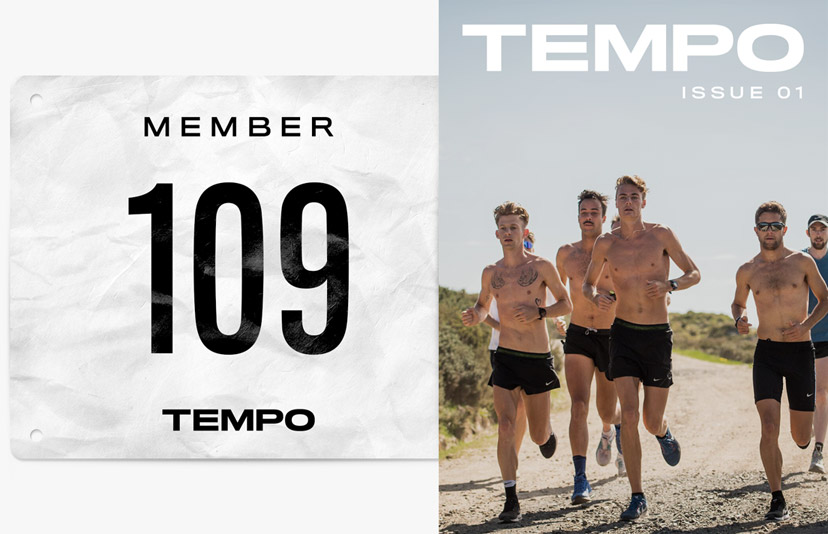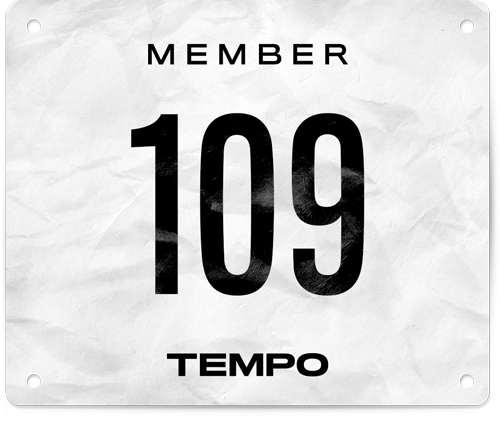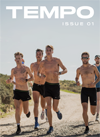Performance
The Full Story?
Athletics Australia speak about their new marathon project
Update Friday March 19th, 1:40pm: The article below mentions my request for comment to Adam Didyk being passed on by him to Athletics Australia, rather than Adam responding to me directly.
In the interests of fairness, Athletics Australia have today made it known that this is standard protocol when discussing what's happening at an organisational level.
Editor's Note: Before you read this opinion piece, it's important that you understand who is writing it - everybody has bias in some form, and I would like to outline mine here. People who know me personally or follow my own social media accounts would know I spend time around many athletes, and some of those are mentioned in the below - and some of them could be negatively affected by the upcoming Sydney Marathon.
Do I think my relationship with those athletes has blurred my vision to what's right and wrong? No, but you can judge that.
Finally - this piece was originally penned on Wednesday March 17th. Before publishing I sent a request for comment to Adam Didyk, who passed it on to an AA spokesperson. That spokesperson was gracious enough to respond to my questioning late on Thursday March 18th - just as the website announcement went live. I've included several AA comments in the below piece.
It was ‘announced’ this week that Athletics Australia would be hosting an elites-only marathon in Sydney in late April in order to provide athletes with another opportunity to run the Olympic standard ahead of Tokyo 2020 (2021).
Only it wasn’t announced at all. TEMPO broke the story after I found it under the ‘Upcoming Events’ section of the AA website. A spokesperson at AA confirmed to me it was loaded onto the website on Friday March 13th - 44 days out from the proposed event. On that - I reached out to AA earlier this week for comment on a number of questions I have on the race, and they were kind enough to oblige. You’ll get to read several of their responses in the below piece.
Anyway, 44 days. We know that 44 days is not enough time to prepare for a marathon, of course it’s not. I get the feeling that might be somewhat irrelevant to the higher powers because some athletes have known about this race for months. Which is where the first issue of fairness is raised. Some athletes have known about this race since January - but others who are eligible to compete only found out when TEMPO posted about the event earlier this week.
The marathon is open to all men who have run under 2:30:00, and all women who have run under 2:50:00. So, shouldn’t reasonable attempts be made to notify all eligible athletes at a similar time? I.e. if some athletes knew about this event months ago, why didn’t AA announce it publicly months ago? A cynical mind might suggest that some athletes have received preferential treatment in advance warning of this race.
I asked AA why they didn’t make stronger attempts to notify all potential entrants at the same time, i.e. on a website announcement.
“Athletics Australia began planning this marathon in January this year and in line with AA’s Competition strategy, athletes across both the Olympic and Paralympic programs were consulted. The date in April was finalised after the event logistics and operations were able to be confirmed, but all marathon athletes were invited to in discussions.”
I wonder practically how AA made sure all competitors under 2:30 / 2:50 were consulted? Is there a WhatsApp group that all the fast marathoners are in? I’m being silly, but it illustrates the point. The idea that all potential entrants were part of discussions is more than hard to believe.
The reason I’m so interested in when athletes were made aware is because it directly relates to fairness and equal opportunity. 14 weeks to prepare versus 7 weeks to prepare will show up in the results.
At the time of submitting questions to AA (Thursday March 18, 1pm), the race had still not been announced - 40 days out from the race. This is another question I put to AA - why hasn’t it been spoken about publicly? (Shortly after I received my replies, the announcement hit the website)
“This is purely to do with Communications resourcing. The event needed to go live on our webpage last Friday to allow for athletes to begin registering their interest, however all hands were on deck for the Sydney Track Classic which took place on Saturday. Unfortunately the AA Communications Manager was on sick leave this week which meant we were unable to get this underway. We are planning for the race to be announced publicly this week.”
So there was urgency to get the event live so athletes could register - (even though they apparently all knew about it anyway and were all invited to be part of the discussions about the race) - but there was no one who could knock out a press release? OK, benefit of the doubt - I'll accept that one. Play on.
Speaking of athletes, let's take a look at the main contenders to benefit from this event. (Note - no part of this column is intended to disrespect any Australian athletes - everybody at TEMPO has the utmost respect for our athletes, I think that has been demonstrated time and time again). On the men’s side, we have 3 athletes already qualified - Brett Robinson, Liam Adams, and Jack Rayner. Outside of them, I can think of barely a handful of athletes who are likely to run close to the 2:11:30 standard. Julian Spence and Ben St Lawrence would make a fair fist of it, but neither have signalled intention to run (I may be wrong), while the rumour mill is buzzing that Sydney athletes Ed Goddard and Tom Do Canto are the two most likely to give it a shake. Ed Goddard has been in a moon boot for weeks, so his ability to run his debut marathon and do it under 2:11:30 would be limited at this stage (Note - Ed is a mate of mine, this is absolutely not a crack at Ed).
Do Canto’s marathon PB is 2:14:59 from 2017, and he ran a fast half marathon in Launceston in December - 1:02:13.
The women’s side is where things get interesting. We currently have Sinead Diver, Lisa Weightman, and Ellie Pashley who have all run the standard (as well as Milly Clark but her time is 4th ranked, and only 3 athletes will be selected). Pashley is our 3rd ranked athlete and has run over 3 minutes inside the standard! (2:26:21).
Of the current crop of Australian athletes who are outside the top 3, the two most obvious are Milly Clark (who ran 2:28:08 Gold Coast 2019, which is a qualifier), and Jess Stenson (who last ran a marathon in Toronto at the end of 2018 in 2:25:59 before taking time away to have her son, Billy).
I don’t know the current status of Clark but she has been absent from racing since early December, when she pulled out of the Launceston Running Festival through injury.
The interesting one here is Jess Stenson (Note - again, this is not about Jess Stenson. We have an enormous amount of respect for Jess - she was a fantastic guest on Running Things in late 2020 and we wish her nothing but the best).
Jess hasn’t raced a marathon since 2018. 2020 obviously made it hard to run a marathon given everything that went on, but it wasn’t impossible. Indeed, Sinead Diver and Ellie Pashley made tough decisions to go and race London in October, unsure of when they would be able to get a flight home (or what it would cost them personally), and then had to deal with hotel quarantine when they did make it back to Australia. Brett Robinson did the same.
I asked AA if they campaigned to get more of our elites into a field like London - to give the athletes more opportunity to post a time.
“There were a number of athletes who were invited to the London Marathon in October 2020 who made the decision not to compete, due to the risks of travelling. AA’s policy at the time was advising athletes to avoid travelling due to the risks associated with COVID-19.”
Now, some commentary on social media and popular podcasts has raised important questions on the roles of those involved in this event. I’ll lay it out carefully as I don’t wish for a solicitor’s letter to arrive in my mailbox.
Adam Didyk is a name known to many. At the time of writing, he holds the below roles:
Head Coach of Team Tempo (the squad Jess is part of)
National Event Lead at Athletics Australia
I also am led to believe that Adam Didyk was a key driver of this event getting the go-ahead (independently verified by two sources who shall remain unnamed). My sources also suggest there was strong objection from some within AA about the event taking place.
In fact, I asked AA directly, ‘Does AA think there's any conflict in having Adam Didyk involved in the decision making process for this event, given his athlete is arguably the most likely to benefit from the race being on?’
“All of our Event Group Leads also double as the personal coaches of athletes. Adam Didyk was involved in the planning of this event, just as the other Event Group Leads are also involved in the decision making process of qualification opportunities in their events at other various competitions including our Track Classics.”
Which is accurate - except slotting in a 1,500m race at a Track Classic is very different to scheduling a marathon. The lead-up is very different - top athletes can usually run 2 marathons per year (3 at a stretch). A 1,500m runner can run that many races in a week. The course in every 1,500m race I've ever watched is also the same. Setting up a new marathon on a pancake flat course to aid fast times is again, a very different thing.
The AA response also ignores the prospect of conflict, and instead focuses on ‘other people do it’. Let me be clear - this is not an attack on Adam Didyk. It’s a questioning of the process, the motives, and the possible conflict of interest - whether that’s Adam Didyk or any other coach. That AA doesn't see a possible conflict in a situation like this is...surprising.
Note - I did reach out to Adam Didyk directly for comment - he chose to pass my requests on to AA, which is absolutely fine, he’s not obligated to answer my questions.
Finally, let’s talk about how this event sets up Australian athletes for success. As it stands, we have 6 athletes who are qualified and preparing to run in Tokyo (plus Milly Clark who as mentioned is 4th ranked of the women). Only now, we have probably at least 2 of those (Ellie Pashley and Jack Rayner) who would be feeling all sorts of anxiety about the upcoming event. Do they risk their bodies for another marathon before Tokyo? The timing of the AA marathon leaves any athlete only 14 weeks until race day in Tokyo - hardly the ideal preparation to represent your country on the global stage.
This is another question I put to AA. I actually don’t know an elite marathoner or elite marathon coach who would think 14 weeks is long enough to recover, rebuild, and sharpen for an Olympic marathon that is expected to take place in tough conditions.
“Athletes do not have to compete in this event to be selected for the Olympic or Paralympic Games. There are a number of coaches that do believe that there is enough time for athletes to rest and recover and to perform at their peak at the Tokyo Games when it matters most.“
So there you have it. I’m grateful to AA for engaging with me and taking the time to provide answers to my questions. It’s really not for me to be satisfied or otherwise with the contents of those responses.
I’m not here to bash AA or incite a mob. TEMPO exists to celebrate our sport, lift up our athletes, and inspire the running community. I do however think it’s important that those in power are held to account - as I’ve tried to do on this occasion.
I wanted to give TEMPO readers AA’s side of the story, which I have done. You can now make up your own mind on the issue. I'm sure the Sunday long runs all over Australia will be filled with enough opinions this weekend - you don't need mine as well.
I will urge AA to continue to engage with ‘new’ media - such as TEMPO, such as Inside Running, because while we might not provide the newspaper blurbs or very occasional TV interviews that mainstream media offer, we do serve core athletics fans every single day. Your athletes and your fans are tuned into our platforms - I believe an important step towards improving the image of AA is commencing an open dialogue with the media who are actually promoting the sport.
It goes without saying that I’m looking forward to seeing how the race unfolds, and like always - we’ll do our very best to try and provide you with coverage and commentary from the event.


